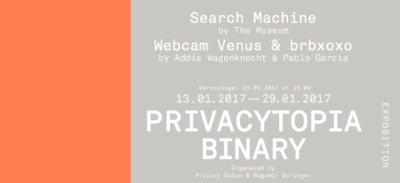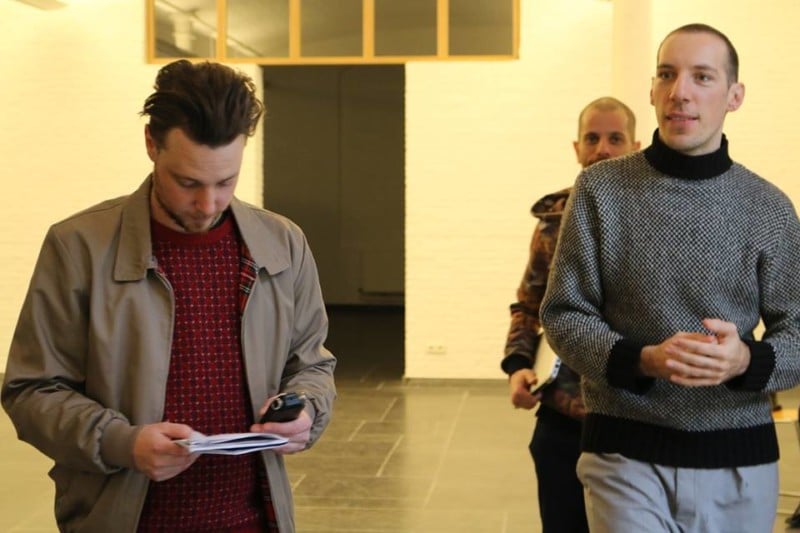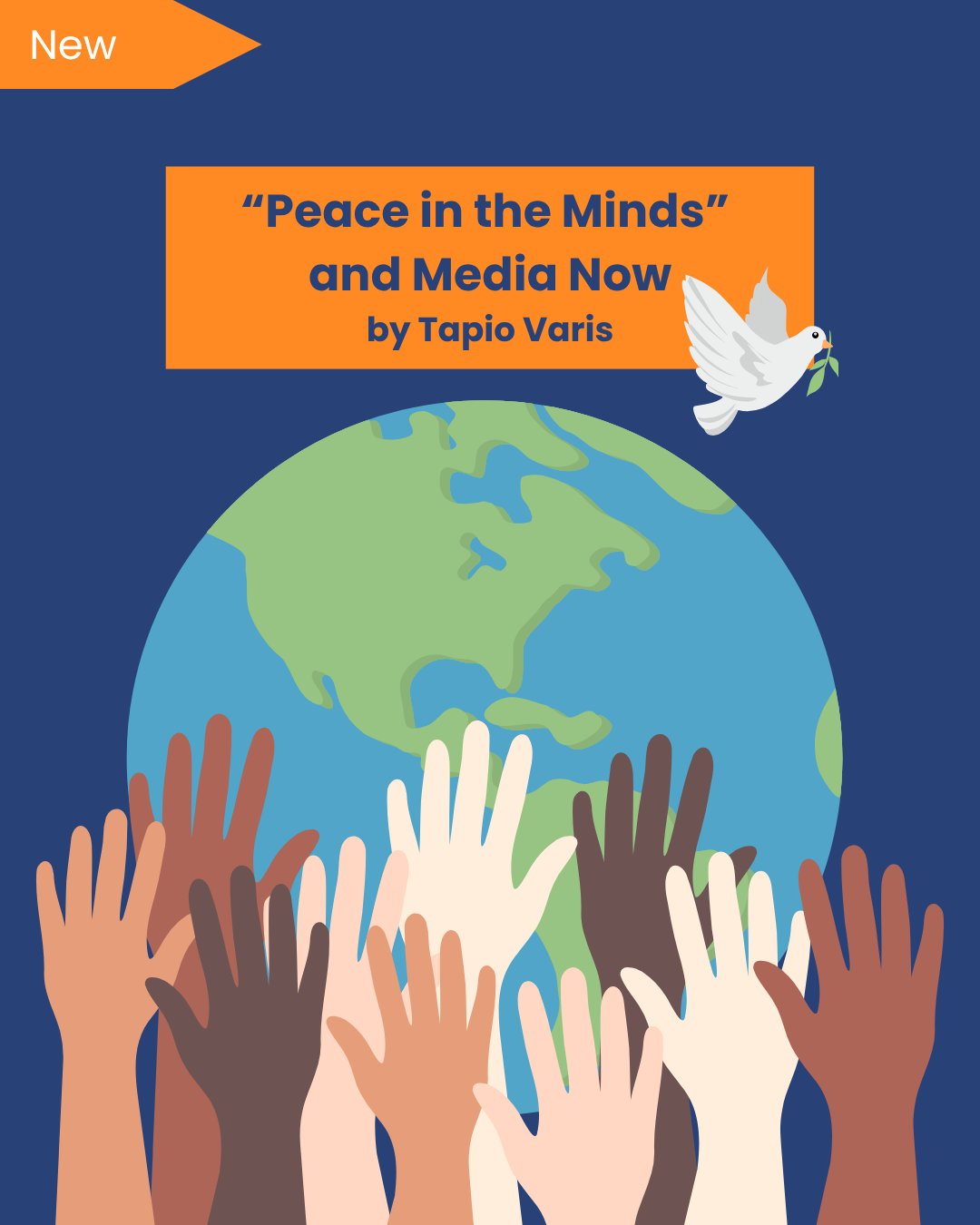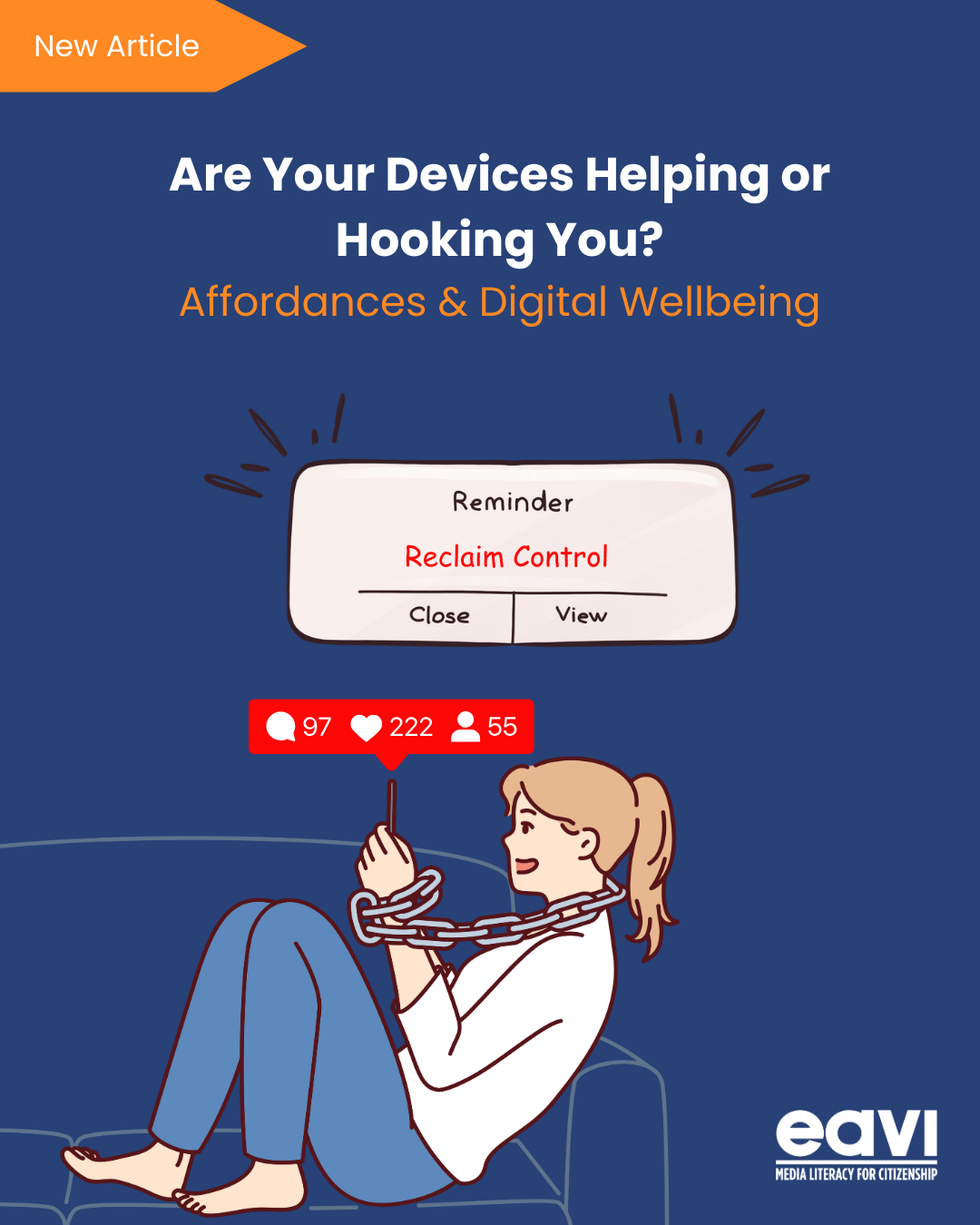Privacytopia Binary is an exhibition and side event of the upcoming 10th International Computers, Privacy and Data Protection conference in Brussels on 25th – 27th January.
Running from Jan 13 – 29, Privacytopia is organised by Privacy Salon and artist, curator and researcher Bogomir Doringer, whom we recently spoke to ahead of the opening, as well as duo The Museum who are presenting as part of the exhibition.
The exhibition explores the issues of privacy and surveillance from unexpected perspectives. The event details and audio interviews are below the jump.
brbxoxo
Artists Addie Wagenknecht and Pablo Garcia, for the project titled brbxoxo, created software that searches online sexcam sites and only broadcasts feeds when the performers are absent. The camera starts recording when the software concludes that the subject is not visible and films the interiors of the models’ houses. brbxoxo explores our intimate screen-based relationships with the digital world, where the webcam attached to our computer becomes surveillance with and without consent.
Webcam Venus
For the project Webcam Venus, Addie Wagenknecht and Pablo Garcia asked online sexcam performers to replicate iconic works of art, thus creating an experimental homage and reenactment of famous fine art works from collections of world renowned museums.
Sexcams use webcams and chat interfaces to connect amateur adult performers with an audience. Users log on to see men, women, transsexuals, couples and groups broadcast their bodies and sexuality live for the public, often performing for money. This work shows the internet phenomenon of cams, using self-surveillance to create a performance for the audience. In order to create this experiment in high and low brow media, artists assumed anonymous handles and spent a few hours each day for a month asking performers: “Would you like to pose for me?” Final results of this project are diptychs showing original and contemporary version. Artists wanted to document the beauty of these people and employ them in a different way.
The Museum: The Search Machine
The choreographer Bruno Listopad and the architect/artist Nikola Knežević collaborated for the first time in creating the installation SHOW MORE (2015) at De Stroom Den Haag, space for art and architecture in The Netherlands. The focus of the project was on YouTube online activities of “non-artists” that facultatively and publicly share a designed image of themselves or their desires, according to their own principles. These individuals consciously in their private spaces self surveille themselves and take charge of their online representation by transforming themselves into subject-objects that either comply with or challenge established norms of behavior.
The performative qualities these works have and the creative strategies they employ raise questions about the distinction between art and “non-art” practices. They could also be seen as fetishistic experimentation. In these videos destruction of famous brands play an important role. These brands are shaping contemporary identities. Materiality and looking for new materials in process of creation is fascinating too.
To intensify their qualities the artists present the works within a digital art space – The Museum – that was created to emphasize the notion of the Internet as today’s largest archive and panoptical museum. The Museum is conceived as an expression of total control by the way it attempts to command the visitor’s gaze, all the data it aggregates in its collection and the subjectivity it engenders.
After long discussion sessions and research of art theory and philosophy but also corporate architecture and esthetic, The Museum as concept and entity started getting it’s presence. Resembling in itself recent historical and postmodern concepts it became fluid space with temporal and adoptable architectural presence. Movement within The Museum is inspired by the flow of the observing drone. It is smooth and seductive but also uneasy. It refers to the idea that smooth surfaces are more easy to observe and control.
The Museum building reminds the viewer of an upside down surveillance camera. Blue lights and the design of hallway originated from the Mira Hotel in Hong Kong from where Edward Snowden has leaked the classified information about NSA surveillance. Zaha Hadid’s bench could be on the ground room before the room with silent running escalators.
In 2016, Bruno Listopad and Nikola Knezevic now (The Museum) were invited to continue their collaboration and produce new work for an exhibition at the Museum Boijmans Van Beuningen in Rotterdam. For this occasion The Museum proposed to select the works from Museum Boijmans Van Beuningen collection as if they would be algorithmically chosen with an analogy to pre mentioned YouTube clips from the SHOW MORE exhibition. Here was born an idea that the museum could function as search engine that makes analogies between recently produced images by non artists and modern and contemporary artworks. Bridging old artistic practices and concepts with contemporary social phenomena.
In its first public presentation The Search Machine is a diptych consisting of photographic documentation of work Expansion no.37 (1970) by French artist César Baldaccini (1921-1998). This work is in the collection of the Museum Boijmans Van Beuningen, Rotterdam. César worked mainly with sculptures made out of found objects organized into compressed industrial heavy forms. His expansion works experiment with materials such as polyurethane (artificial synthetic). In this work a car could be seen as man fetish, displayed with the feeling of frozen movement suggesting flow or change in time of modernity. It suggests a step forward a step to next. This work is an analogy with The Museum’s textual interpretation of the YouTube video “performance”. The described video is selected based on its form, tension, texture, colour or relation of body and the branded object lying underneath.
Interview with Bogomir Doringer
Interview with The Museum
Event details:
Opening: 13th Jan at 7pm
Location: De Markten, Oude Graanmarkt 5 Rue du Vieux Marché aux Grains, 1000 Brussels
Organised by Privacy Salon and Bogomir Doringer
In partnership with CPDP2017 and De Markten
Dates: 13-29 January 2017
Privacytopia Binary is an exhibition and side event of the upcoming 10th International Computers, Privacy and Data Protection conference in Brussels on 25th – 27th January.
Running from Jan 13 – 29, Privacytopia is organised by Privacy Salon and artist, curator and researcher Bogomir Doringer, whom we recently spoke to ahead of the opening, as well as duo The Museum who are presenting as part of the exhibition.
The exhibition explores the issues of privacy and surveillance from unexpected perspectives. The event details and audio interviews are below the jump.
brbxoxo
Artists Addie Wagenknecht and Pablo Garcia, for the project titled brbxoxo, created software that searches online sexcam sites and only broadcasts feeds when the performers are absent. The camera starts recording when the software concludes that the subject is not visible and films the interiors of the models’ houses. brbxoxo explores our intimate screen-based relationships with the digital world, where the webcam attached to our computer becomes surveillance with and without consent.
Webcam Venus
For the project Webcam Venus, Addie Wagenknecht and Pablo Garcia asked online sexcam performers to replicate iconic works of art, thus creating an experimental homage and reenactment of famous fine art works from collections of world renowned museums.
Sexcams use webcams and chat interfaces to connect amateur adult performers with an audience. Users log on to see men, women, transsexuals, couples and groups broadcast their bodies and sexuality live for the public, often performing for money. This work shows the internet phenomenon of cams, using self-surveillance to create a performance for the audience. In order to create this experiment in high and low brow media, artists assumed anonymous handles and spent a few hours each day for a month asking performers: “Would you like to pose for me?” Final results of this project are diptychs showing original and contemporary version. Artists wanted to document the beauty of these people and employ them in a different way.
The Museum: The Search Machine
The choreographer Bruno Listopad and the architect/artist Nikola Knežević collaborated for the first time in creating the installation SHOW MORE (2015) at De Stroom Den Haag, space for art and architecture in The Netherlands. The focus of the project was on YouTube online activities of “non-artists” that facultatively and publicly share a designed image of themselves or their desires, according to their own principles. These individuals consciously in their private spaces self surveille themselves and take charge of their online representation by transforming themselves into subject-objects that either comply with or challenge established norms of behavior.
The performative qualities these works have and the creative strategies they employ raise questions about the distinction between art and “non-art” practices. They could also be seen as fetishistic experimentation. In these videos destruction of famous brands play an important role. These brands are shaping contemporary identities. Materiality and looking for new materials in process of creation is fascinating too.
To intensify their qualities the artists present the works within a digital art space – The Museum – that was created to emphasize the notion of the Internet as today’s largest archive and panoptical museum. The Museum is conceived as an expression of total control by the way it attempts to command the visitor’s gaze, all the data it aggregates in its collection and the subjectivity it engenders.
After long discussion sessions and research of art theory and philosophy but also corporate architecture and esthetic, The Museum as concept and entity started getting it’s presence. Resembling in itself recent historical and postmodern concepts it became fluid space with temporal and adoptable architectural presence. Movement within The Museum is inspired by the flow of the observing drone. It is smooth and seductive but also uneasy. It refers to the idea that smooth surfaces are more easy to observe and control.
The Museum building reminds the viewer of an upside down surveillance camera. Blue lights and the design of hallway originated from the Mira Hotel in Hong Kong from where Edward Snowden has leaked the classified information about NSA surveillance. Zaha Hadid’s bench could be on the ground room before the room with silent running escalators.
In 2016, Bruno Listopad and Nikola Knezevic now (The Museum) were invited to continue their collaboration and produce new work for an exhibition at the Museum Boijmans Van Beuningen in Rotterdam. For this occasion The Museum proposed to select the works from Museum Boijmans Van Beuningen collection as if they would be algorithmically chosen with an analogy to pre mentioned YouTube clips from the SHOW MORE exhibition. Here was born an idea that the museum could function as search engine that makes analogies between recently produced images by non artists and modern and contemporary artworks. Bridging old artistic practices and concepts with contemporary social phenomena.
In its first public presentation The Search Machine is a diptych consisting of photographic documentation of work Expansion no.37 (1970) by French artist César Baldaccini (1921-1998). This work is in the collection of the Museum Boijmans Van Beuningen, Rotterdam. César worked mainly with sculptures made out of found objects organized into compressed industrial heavy forms. His expansion works experiment with materials such as polyurethane (artificial synthetic). In this work a car could be seen as man fetish, displayed with the feeling of frozen movement suggesting flow or change in time of modernity. It suggests a step forward a step to next. This work is an analogy with The Museum’s textual interpretation of the YouTube video “performance”. The described video is selected based on its form, tension, texture, colour or relation of body and the branded object lying underneath.
Interview with Bogomir Doringer
Interview with The Museum
Event details:
Opening: 13th Jan at 7pm
Location: De Markten, Oude Graanmarkt 5 Rue du Vieux Marché aux Grains, 1000 Brussels
Organised by Privacy Salon and Bogomir Doringer
In partnership with CPDP2017 and De Markten
Dates: 13-29 January 2017
Privacytopia Binary is an exhibition and side event of the upcoming 10th International Computers, Privacy and Data Protection conference in Brussels on 25th – 27th January.
Running from Jan 13 – 29, Privacytopia is organised by Privacy Salon and artist, curator and researcher Bogomir Doringer, whom we recently spoke to ahead of the opening, as well as duo The Museum who are presenting as part of the exhibition.
The exhibition explores the issues of privacy and surveillance from unexpected perspectives. The event details and audio interviews are below the jump.
brbxoxo
Artists Addie Wagenknecht and Pablo Garcia, for the project titled brbxoxo, created software that searches online sexcam sites and only broadcasts feeds when the performers are absent. The camera starts recording when the software concludes that the subject is not visible and films the interiors of the models’ houses. brbxoxo explores our intimate screen-based relationships with the digital world, where the webcam attached to our computer becomes surveillance with and without consent.
Webcam Venus
For the project Webcam Venus, Addie Wagenknecht and Pablo Garcia asked online sexcam performers to replicate iconic works of art, thus creating an experimental homage and reenactment of famous fine art works from collections of world renowned museums.
Sexcams use webcams and chat interfaces to connect amateur adult performers with an audience. Users log on to see men, women, transsexuals, couples and groups broadcast their bodies and sexuality live for the public, often performing for money. This work shows the internet phenomenon of cams, using self-surveillance to create a performance for the audience. In order to create this experiment in high and low brow media, artists assumed anonymous handles and spent a few hours each day for a month asking performers: “Would you like to pose for me?” Final results of this project are diptychs showing original and contemporary version. Artists wanted to document the beauty of these people and employ them in a different way.
The Museum: The Search Machine
The choreographer Bruno Listopad and the architect/artist Nikola Knežević collaborated for the first time in creating the installation SHOW MORE (2015) at De Stroom Den Haag, space for art and architecture in The Netherlands. The focus of the project was on YouTube online activities of “non-artists” that facultatively and publicly share a designed image of themselves or their desires, according to their own principles. These individuals consciously in their private spaces self surveille themselves and take charge of their online representation by transforming themselves into subject-objects that either comply with or challenge established norms of behavior.
The performative qualities these works have and the creative strategies they employ raise questions about the distinction between art and “non-art” practices. They could also be seen as fetishistic experimentation. In these videos destruction of famous brands play an important role. These brands are shaping contemporary identities. Materiality and looking for new materials in process of creation is fascinating too.
To intensify their qualities the artists present the works within a digital art space – The Museum – that was created to emphasize the notion of the Internet as today’s largest archive and panoptical museum. The Museum is conceived as an expression of total control by the way it attempts to command the visitor’s gaze, all the data it aggregates in its collection and the subjectivity it engenders.
After long discussion sessions and research of art theory and philosophy but also corporate architecture and esthetic, The Museum as concept and entity started getting it’s presence. Resembling in itself recent historical and postmodern concepts it became fluid space with temporal and adoptable architectural presence. Movement within The Museum is inspired by the flow of the observing drone. It is smooth and seductive but also uneasy. It refers to the idea that smooth surfaces are more easy to observe and control.
The Museum building reminds the viewer of an upside down surveillance camera. Blue lights and the design of hallway originated from the Mira Hotel in Hong Kong from where Edward Snowden has leaked the classified information about NSA surveillance. Zaha Hadid’s bench could be on the ground room before the room with silent running escalators.
In 2016, Bruno Listopad and Nikola Knezevic now (The Museum) were invited to continue their collaboration and produce new work for an exhibition at the Museum Boijmans Van Beuningen in Rotterdam. For this occasion The Museum proposed to select the works from Museum Boijmans Van Beuningen collection as if they would be algorithmically chosen with an analogy to pre mentioned YouTube clips from the SHOW MORE exhibition. Here was born an idea that the museum could function as search engine that makes analogies between recently produced images by non artists and modern and contemporary artworks. Bridging old artistic practices and concepts with contemporary social phenomena.
In its first public presentation The Search Machine is a diptych consisting of photographic documentation of work Expansion no.37 (1970) by French artist César Baldaccini (1921-1998). This work is in the collection of the Museum Boijmans Van Beuningen, Rotterdam. César worked mainly with sculptures made out of found objects organized into compressed industrial heavy forms. His expansion works experiment with materials such as polyurethane (artificial synthetic). In this work a car could be seen as man fetish, displayed with the feeling of frozen movement suggesting flow or change in time of modernity. It suggests a step forward a step to next. This work is an analogy with The Museum’s textual interpretation of the YouTube video “performance”. The described video is selected based on its form, tension, texture, colour or relation of body and the branded object lying underneath.
Interview with Bogomir Doringer
Interview with The Museum
Event details:
Opening: 13th Jan at 7pm
Location: De Markten, Oude Graanmarkt 5 Rue du Vieux Marché aux Grains, 1000 Brussels
Organised by Privacy Salon and Bogomir Doringer
In partnership with CPDP2017 and De Markten
Dates: 13-29 January 2017










































































































































































